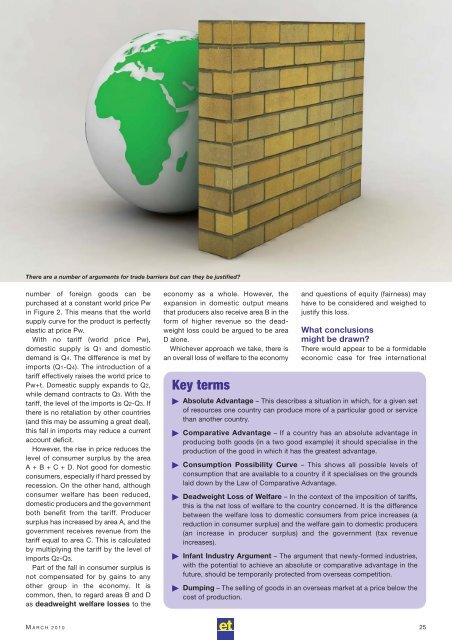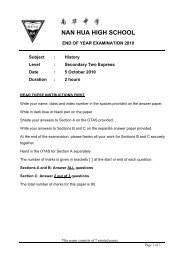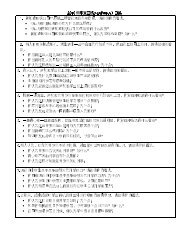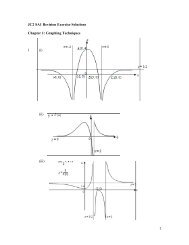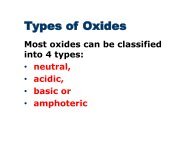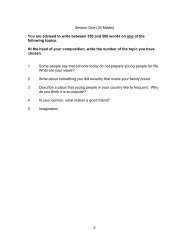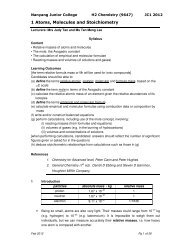Eco Today - Mar10:ET Master Page 2007 - ASKnLearn
Eco Today - Mar10:ET Master Page 2007 - ASKnLearn
Eco Today - Mar10:ET Master Page 2007 - ASKnLearn
You also want an ePaper? Increase the reach of your titles
YUMPU automatically turns print PDFs into web optimized ePapers that Google loves.
There are a number of arguments for trade barriers but can they be justified?<br />
number of foreign goods can be<br />
purchased at a constant world price Pw<br />
in Figure 2. This means that the world<br />
supply curve for the product is perfectly<br />
elastic at price Pw.<br />
With no tariff (world price Pw),<br />
domestic supply is Q1 and domestic<br />
demand is Q4. The difference is met by<br />
imports (Q1-Q4). The introduction of a<br />
tariff effectively raises the world price to<br />
Pw+t. Domestic supply expands to Q2,<br />
while demand contracts to Q3. With the<br />
tariff, the level of the imports is Q2-Q3. If<br />
there is no retaliation by other countries<br />
(and this may be assuming a great deal),<br />
this fall in imports may reduce a current<br />
account deficit.<br />
However, the rise in price reduces the<br />
level of consumer surplus by the area<br />
A + B + C + D. Not good for domestic<br />
consumers, especially if hard pressed by<br />
recession. On the other hand, although<br />
consumer welfare has been reduced,<br />
domestic producers and the government<br />
both benefit from the tariff. Producer<br />
surplus has increased by area A, and the<br />
government receives revenue from the<br />
tariff equal to area C. This is calculated<br />
by multiplying the tariff by the level of<br />
imports Q2-Q3.<br />
Part of the fall in consumer surplus is<br />
not compensated for by gains to any<br />
other group in the economy. It is<br />
common, then, to regard areas B and D<br />
as deadweight welfare losses to the<br />
economy as a whole. However, the<br />
expansion in domestic output means<br />
that producers also receive area B in the<br />
form of higher revenue so the dead -<br />
weight loss could be argued to be area<br />
D alone.<br />
Whichever approach we take, there is<br />
an overall loss of welfare to the economy<br />
Key terms<br />
and questions of equity (fairness) may<br />
have to be considered and weighed to<br />
justify this loss.<br />
What conclusions<br />
might be drawn?<br />
There would appear to be a formidable<br />
economic case for free international<br />
Absolute Advantage – This describes a situation in which, for a given set<br />
of resources one country can produce more of a particular good or service<br />
than another country.<br />
Comparative Advantage – If a country has an absolute advantage in<br />
producing both goods (in a two good example) it should specialise in the<br />
production of the good in which it has the greatest advantage.<br />
Consumption Possibility Curve – This shows all possible levels of<br />
consumption that are available to a country if it specialises on the grounds<br />
laid down by the Law of Comparative Advantage.<br />
Deadweight Loss of Welfare – In the context of the imposition of tariffs,<br />
this is the net loss of welfare to the country concerned. It is the difference<br />
between the welfare loss to domestic consumers from price increases (a<br />
reduction in consumer surplus) and the welfare gain to domestic producers<br />
(an increase in producer surplus) and the government (tax revenue<br />
increases).<br />
Infant Industry Argument – The argument that newly-formed industries,<br />
with the potential to achieve an absolute or comparative advantage in the<br />
future, should be temporarily protected from overseas competition.<br />
Dumping – The selling of goods in an overseas market at a price below the<br />
cost of production.<br />
M ARCH 2010 25


